#spanish culture
Text
A not-complete list of wonderful changes, translation and localization I noticed when I went to see Book of Mormon in Madrid!
Hey! So I went to see The Book of Mormon last month in Madrid, and since I had watched (bootlegged) and listened to the original production, I was able to enjoy some changes they made so it could be enjoyed by spanish audiences!
First off, I should say that it wasn’t a replica production (and I think I much prefer this one!). The choreography was amazing, and definitely more elaborate than on broadway ! Here, have a look: https://youtu.be/NZ5UxjN2MPs?si=UErYQUODo5Qs-EMC
Some of the first changes I wondered how they were going to make was the opening number: both Hello and Hola have the same syllables but hola cannot be used, since the accent falls on the first syllable in hola and the second in hello….. so spanish mormons just end up saying how are you (¿qué tal?) 😂
Second change comes during the second number, two by two: one of the jokes is weirdly untranslatable, which is the addendum at the end of the phrase “we are the soldiers of the church of jesus christ (of latter day saints)”. Since in spanish “of la-tter day saints” (5 syllables) would be “de los úl-ti-mos dí-as” (7 syllables), they changed it to “yo-soy-mor-món” (i am a mormon) which fits! There is a joke lost, but mormonism isn’t as widespread as it is on the US, so it’s hardly noticeable.
This one is mostly to update the content, but during two by two when the trip to japan gets announced, the mormons are excited about soy sauce and godzilla (instead of mothra)
Next comes a change i also wondered about: how do you make a joke out of Elder Price’s wish to go to Orlando, of all things? In the English version, Elder Price would like to go to orlando because of Sea World, Disney and putt-putt golfing: spaniards have no cultural knowledge of what Orlando is, so the translated line is “Orlando! Disney me espera, soy fan de Frozen” (Orlando! Disney is waiting for me, I’m a Frozen fan) which really drives home the ridiculousness of choosing that place as your mission trip. Also, if you watch the video i linked, the joke is super amplified through choreography, which is part of why i love this production so much.
Hasa diga eebowai gets one change Very right: instead of saying fuck you god, they say “me cago en dios” (i shit on god) which is a very common way of cursing about things in spain: you can shit on the milk (me cago en la leche), on your mother (me cago en tu madre) and indeed, you can shit on god!
One fun localization comes in at the end of All-American prophet, a song that’s basically a sales pitch or infomercial : the fun little gag at the end where Elder Cunningham says “if you order now, we’ll also throw a seat of steak knives” gets changed to “if you order now, we’ll throw in a thermomix for free” For people who don’t know, a thermomix is The Product everyone gets from infomercials/ through independent sellers: it’s a chopper/blender/cooker/scale/kitchen robot, very convenient! My mother has one :) one of the ugandan ladies asks Cunningham about the thermomix inmediatly after finishing the number and he excitedly begins explaining the whole shtick every middle aged spanish lady has heard before, that got a big laugh :)
In the sequence before spooky mormon hell dream, when Elder Price’s so happy that he finally reaches Orlando, he throws in another elsa joke, saying that he’s blonde like her, so thats why she likes her😂
During Spooky mormon hell dream, one change that got Such a big laugh was seeing the four people that are in hell according to Elder Price: Genghis Khan, Hitler, Jeffrey Dahmer and, instead of Jonnie Cochran (idk even who he is) we got Silvio Berlusconi, politician and founder of communications company Mediaset, which runs a thrash tv channel called Telecinco (and that’s what he’s in hell for, according to the song)
The thing elder cunningham always says “tomorrow’s a latter day” gets changed to a saying a lot of catholic old people say, “mañana dios dirá” which both fits in the metric and localizes it, since mormonism isn’t that well known.
And that’s it! It was such a wonderful performance, and a testament to the beauty of translation: even if i know I understand English fairly well, seeing the jokes on my native language made everything 100x times funnier! Strongly recommend!
#the book of mormon#tbom musical#tbom#translating#musicals#musical theatre#musical theater#localization#translation#broadway#spanish#spain#madrid#spanish culture
43 notes
·
View notes
Text

Pablo Picasso
Still life with head of black bull
1938
#pablo picasso#bulls#animals in art#cubism#cubist#cubist painter#spanish artists#spanish art#spanish painting#spanish painter#modern art#beautiful animals#spanish culture#art history#aesthetictumblr#tumblraesthetic#tumblrpic#tumblrpictures#tumblr art#tumblrstyle#aesthetic#modern aesthetic
29 notes
·
View notes
Text
#Jarcha#Jarcha mozárabe#Dance#Danza árabe#spanish culture#spanish music#medieval#medieval music#medieval art#spain
14 notes
·
View notes
Text

Reinaldo [original characters]
12/02/2024
¡Ole, que arte!
#art#digital art#digital illustration#digital painting#illustration#painting#oc art#oc#original character#original characters#original character art#original character design#character design#concept character#torero#spain#spanish culture#flamenco#bull fighter#olé
11 notes
·
View notes
Photo

Bullfighting is the only art in which the artist is in danger of death and in which the degree of brilliance in the performance is left to the fighter’s honour.
- Ernest Hemingway, Death in the Afternoon
#hemingway#ernest hemingway#quote#bullfight#bullfighting#spain#honour#matador#bull#art#courage#bravery#culture#spanish culture
90 notes
·
View notes
Text

Letter of nobility that still preserves the pending seal of Philip IV
It belonged to Juan de las Muelas, from Bólliga, Cuenca (Spain)
Bound in Granada in 1649
Source
#art#fine art#beauty#spanish art#spanish culture#art history#17th century#17th century art#european art#european culture#golden
15 notes
·
View notes
Text
Antes muerta que sencilla, y por eso c murio u.u

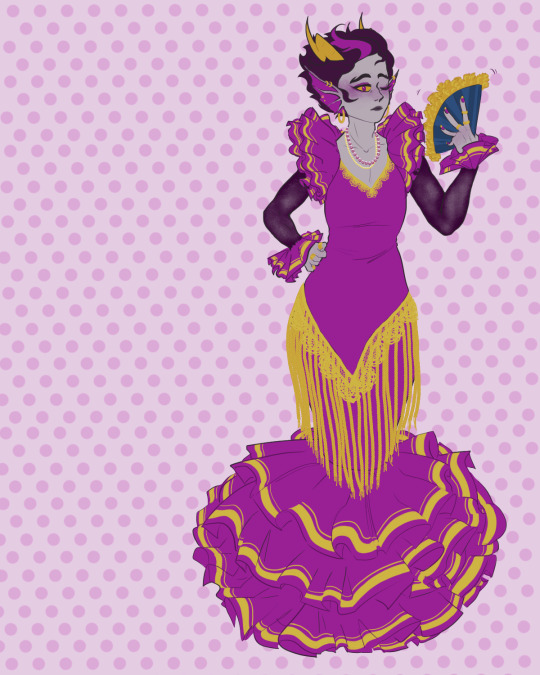
Gitanilla! Eridan porque soy español, andaluz y 100% seguro que le encantarían los vestidos de gitana.
Kanaya - WIP
12 notes
·
View notes
Text
LoZ: TotK - Zonai Views on Masculinity
Since the Zonai are inspired by Mesoamerican culture, I thought that it'd be interesting if, much like in Mexican culture, there are 2 ideas of masculinity & what it means to be a man.
The most preferred idea of it is called caballerismo, while the less preferred is machismo.
This is partially due to the misuse or misunderstanding of machismo as the philosophy behind it is the projection of one's traits as a man. Which, if you have incorrect assumptions about what being a man means, can result in a corruption of the intended meaning. However, caballerismo is specifically gentlemanly behavior. Which is much harder to see as anything other than what it is.
Machismo is typically associated with what many today consider "toxic masculinity." Though, only when that machismo isn't applied correctly. According to machismo. The real Machismo. A man must be assertive, confident, cool, strong, & sexually viral.
However, when done incorrectly, men practicing it can instead become overly aggressive, sexist, chauvanistic, & hypermacho.
The thing is that Zonai believe that truly masculine men treat others, not just women, with respect. And that those who don't cannot consider themselves masculine or even men at all.
Caballerismo, however, is by & large, most thought of as being nurturing, family-oriented, protective, & chivalrous. Thus, what more conservative parties consider as being more in-line with actual masculinity, as to them, if you're not gentle, nurturing, & protective, then you aren't really a man. Others, however, likely think of it as "embracing their more feminine side," when really, it's just a different side to masculinity than what's been recently associated with it.
The things that the 2 have in common is a belief that one needs to be strong, dominant, & stoic in one's day-to-day, however, where they differ is in how those qualities are executed & the motivations behind them. Especially in regards to corrupted machismo.
Incorrect-applied machismo's strength is for one's own self, while caballerismo's strength is for others. Incorrectly-applied machismo's dominance is expressed actively & oftentimes physically, while caballerismo's dominance is normally much more passive. And incorrectly-applied machismo's stoicism is such that crying is considered weakness, point blank, & isn't allowed at any point. Meanwhile, caballerismo's stoicism is geared more towards emotional control & restraint, so though crying in public isn't encouraged, it also isn't looked down upon so long as one doesn't make a scene & is able to retain a degree of composure, & crying in private in the presence of your loved ones is considered normal, healthy even, so long as it doesn't happen all the time.
This, like with incorrectly-applied machismo, is due to possibly being seen as weak, thus leading to the possibility of being taken advantage of, but caballerismo at least acknowledges that we are all weak at times & simply endeavors to control when & how that weakness is shown. And the primary motivator is normally that this weakness could lead to the man's loved one's being harmed as a result.
Strength in terms of masculinity doesn't only mean physical strength, it also means emotional & mental strength, basically strength of character. So, resilience in the face of adversity.
In this way, I think that the Zonai would see masculinity as a coin with 2 sides & would likely think similarly of femininity. Both sides being essential in what it means to be a man.
One needs both to be a good man. However, machismo is, unfortunately, the easiest to become corrupted.
In a lot of ways, I consider both Link & Rauru to be clear examples of caballerismo, while Ganon fits right into the idea of the machismo stereotype when applied incorrectly.
LoZ Cultural Masterlist
10 notes
·
View notes
Text
Next on the Bucket List: Spain

Spain is a stunningly vibrant nation that has plenty to offer all who visit, including breath-taking architecture, scenic spots, delectable cuisine, and a rich cultural heritage. I'll be breaking down some possible activities to include in your itinerary, there being endless things to do when traveling to this new and exciting area!
Activities and Attractions
Each Spanish city has a distinctive charm and offers something different for everyone who visits. The most widely visited locations are undoubtedly Madrid, Barcelona, Malaga, and the island of Ibiza, all of which have a ton to offer for tourists and locals. Spain has a rich and intriguing history, and visiting museums and art galleries is a wonderful opportunity to immerse yourself in the country's culture. Some of the most renowned museums are The Prado Museum and El Prado in Madrid and the Picasso Museum in Barcelona, all of which are tourist-favorites. If you want a different setting, there are many ancient castles and gothic cathedrals to visit in Spain, Lorca Castle and Burgos Cathedral being some of the most prominent to visit and admire. There is no doubt that Spain has some of the most stunning beaches in Europe, including Costa Brava, Costa del Sol, and Costa Blanca.

Festivals are popular in Spanish culture, where traditional eccentric dress is worn. At these festivals, there is flamenco dancing, tomato fights, bull races, contests, parades, and tons of Spanish cuisine. This is a great way to be immersed into Spanish culture whether you're alone or with a group! As we all know, Fútbol is a very popular and celebrated sport in Spain, and attending a match is another unforgettable experience for spirited fans of Real Madrid and FC Barcelona.
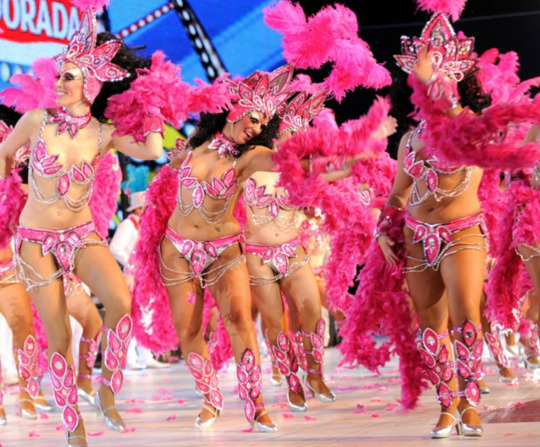
Food
Moving forward, Spain is known for its unique and tasty cuisine and each region typically has specialty foods. A very popular dish is Paella, which includes rice stuffed with saffron, vegetables and meat. Gazpacho, Tortilla Espanola, Patatas Bravas, and Pulpo a la Gallega are just a few of the most versatile options offered throughout the country. It is a known custom that Spanish residents eat dinner between the hours of 9 and 11 pm, so plan to have lunch between 2 and 4 pm so you're not famished waiting til dinner. Venturing out of your comfort zone and trying something you wouldn't normally eat is encouraged, and you should be openminded about everything because it might become your new favorite!
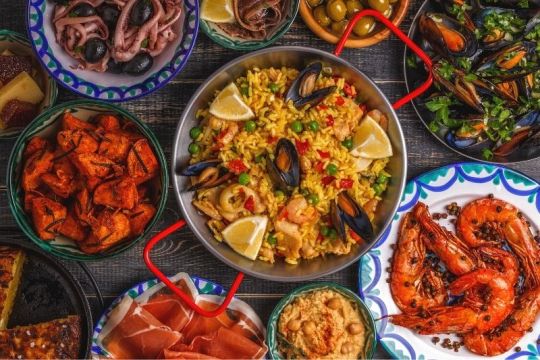
Transportation
Public transportation makes travel efficient and easy, and Spain has a great system that ranges from trains, buses, to metros, etc. These options are typically very cheap and will allow you to venture from city to city in the timely manner and help you navigate the country with ease and minimal stress! If you aren't fluent in Spanish, having a translator app is very useful for when you're on the road, though the majority of residents typically speak some degree of English.

When planning your trip to Spain, I highly recommend that you see all the things that this amazing country has to offer so you can appreciate and experience the beautiful Spanish culture and scenery. Everyone should have Spain on their bucket list, as there are endless things to do and an incredible culture that you just have to see for yourself!
#spain#europe#travel blog writer#wanderlust#places to explore#explore#seetheworld#adventure#vacation#goexplore#travel photography#trip#landscape#architecture#spanish cuisine#spanish culture#festivals#football#madrid#portugal#barcelona#languages#el prado#ancient history#spainiswonderful
25 notes
·
View notes
Text
Lace
alright time to share my lace obsession with you all. I LOVE lace and as a folklorico dancer I love regional/traditional wear in general. Seeing people embracing their culture or others cultures makes my heart flutter. Traditional wear is just so intricate and so reflective of a regions history and climate. Everyone looks so good in traditional clothes 😭. It’s so cool to me how lace is in so many traditional costumes and formal wear around the world.
żywiecki has murdered me with its beauty


Oh to be a polish woman dolled up and drowned in layers of lace. They all look so vibrant and lovely. Much love to all my polish friends.
French Costume from the Region of Brittany
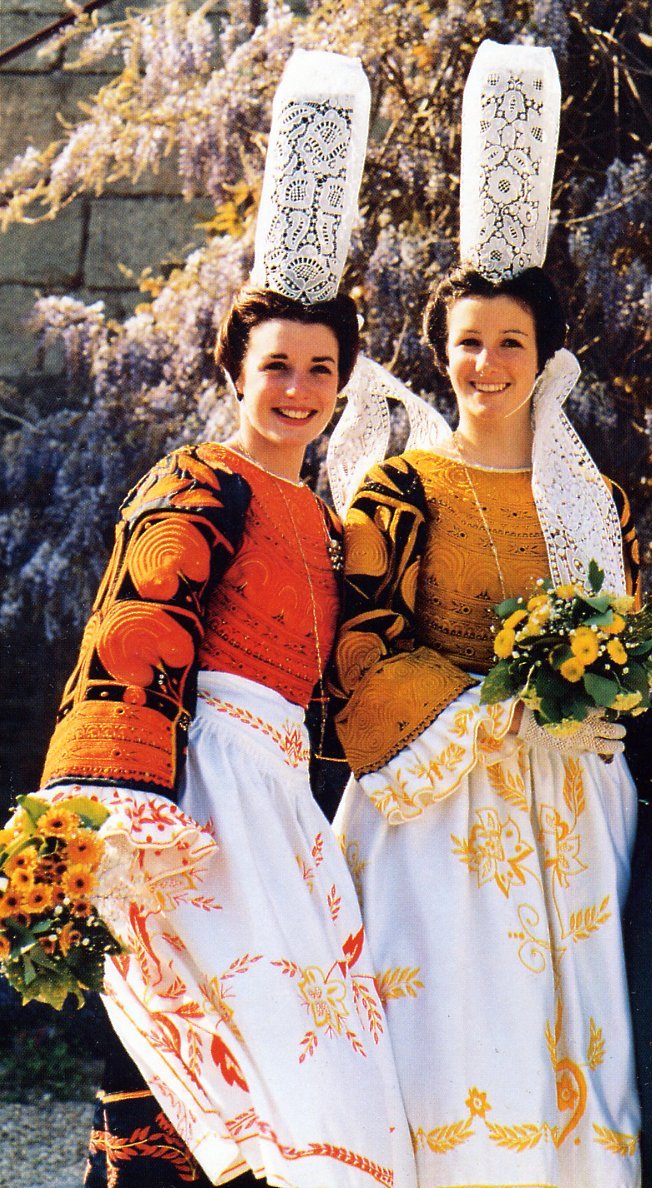
Stunning. The lace head pieces are so unique.
Traditional Spanish Costume
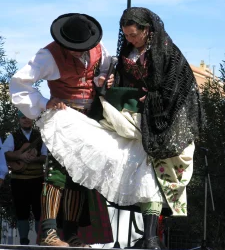
I have a particular affection for Spain. 🤍 Her veil is so lovely.



Some Filipino/ Filipina representation. The lace in the first photo is so delicate, and the large sleeves really add a flair and femininity. I love the lace trimming on the last photo in particular. The white lace contrasts so nicely with their dark hair.


The last two photos are of me (with my face and the background cropped for safety of course). I’m a Folklorico dancer so I get to wear a ton of beautiful Mexican dresses. The one on the left is the Vestido de Veracruz (my favorite region and dress) as you can see it is all white and incorporates lots of lace. The second dress is from Jalisco and much more colorful. The lace and ribbon trimming is very festive. Both traditional costumes are quite modest and have long full skirts.
I could go on and on…
6 notes
·
View notes
Text

Tenerife, Canary Islands (2024)
photography by @zoedargue
https://zoedargue.com/
#Tenerife#Spanish culture#Teide#Teide National Park#Los Gigantes#ocal festivals#Tourist Attraction#travel#photography#photographer#phone#island#canary islands#islands#Highlands and Islands#vacation#festival#holiday#SUM#Summer#aestrhetic#film aesthetic#Aesthetic
4 notes
·
View notes
Text

#22356c #d2cbcc #2389e4 #a77a72 #85b7ed #dca027 #6974a2 #3accfe #543128 #1457b5
#ColorPalette#ColorHex#Palette#Inspiration#Aesthetic#CuratorsOnTumblr#Fyp#Spain#Seville#Traveling#Spain Travel#Spanish Architecture#Spanish Culture#Walking Spain#Urban Landscape#Historical places#Street photography
3 notes
·
View notes
Text
I've mentioned on Zorro Discord that non-noble Spaniards preferred navaja knives.
Here is the finale of 'Bodas de sangre' (Bloody Wedding) by Carlos Saura, where flamenco dancers (one of them is the famous Antonio Gades) symbolically depict a fight with such knives.
youtube
And there was also el cuchillo and other types of long knives...
A flesh-eating knife
with sweet, murderous wing
keeps flying and shining
around my life.
© „Un carnívoro cuchillo (A flesh-eating knife)“
by Miguel Hernández
#zorro#spain#navaja#cuchillo#knives#weapon#flamenco#flamenco dancer#carlos saura#Antonio Gades#bodas de sangre#miguel hernández#poetry#spanish poems#spanish#spaniard#spanish culture#Youtube
6 notes
·
View notes
Text
Spanish myths and folklore: La Serrana
The Serrana (Mountain Woman) is a Spanish myth originated in Northern Extremadura, but widestread throughout the entire Iberian Peninsula, including Portugal, and the Canary Islands.
The Serrana is a beatuful woman with the appearance of a hunter or an Amazon with superhuman strength and certain supernatural characteristics who lives in the mountains and took the men she came across to her cave to kill them (often after getting them drunk and/or having sex with them) and store the bones in the cave.
She is realted to Medieval “serranillas”, to which other mythical components would be added to forge the current modern myth of the Serrana. The character has had to various manifestations in Spanish culture and folklore, being able to distinguish between the Serrana de la Vera as a myth, the Serrana as a character from romances of oral tradition and its variations, and the Serrana as a character from literature (especially suring the Spanish Golden Age).
The story of the Serrana has also been collected in numerous folk songs, especially in Extremadura and the southern region of Salamanca. Here’s an example of traditional Spanish folk music from the aforementioned regions, in which the lyrics are almost exclusively accompaigned by the also traditional and distinctive Spanish tamborilero, who, alongside the drum (tabor) also play the flute, dulzaina, or bagpipe.
undefined
youtube
English Lyrics
In Garganta de la Olla, a league and a half from Plasencia,
there lived a tall, blond, charming mountain woman.
Her waist is yard and a half, her wirst a span and a half,
her hair reached her old shoes.
When she felt thirsty, she climbed the high crags,
when she lusted for men, she came down from the mountains.
She saw a mountain boy coming with a load of firewood,
she tooks him by the hand and leads him to her cave.
She does not take him through paths nor lanes,
she takes him over high mountains, where no one can see them.
They tried to make a fire with the bones and skulls
of the men killed by that terrible beast.
They tried to dine a delicious dinner
of rabbits and partridges and turtledoves.
“Drink, mountain boy, drink, water from that skull,
it may be that one day someone drinks from yours”.
They tried to go to bed, she ordered him to close the door
and the mountain boy, as best as he could, has left it half open.
When he has felt her asleep, he has gone outside.
He has been walking for half a league without turning his head.
When she has sensed his absence, she has gone outside.
She put a stone in the sling, which weighed one and a half pounds.
With the force and wind that it carried, it has knocked down his montera,
and if not for an oak, it knocks his head off.
“Come back, mountain boy, come back; come back for your montera,
it is of fine and good cloth, it would be a pity if it was lost.“
“If it gets lost, so be it; I don't care about the montera.
My mother will buy me a new one, and if she doesn’t, I'm fine with it”.
“I beg you, mountain boy, do not discover my cave,
if you discover it, I will cut off your head.
Your father will be the horse, your mother will be the mare,
and you will be the little foal that neighs through the mountains.”
#spain#spanish culture#legends#tradition#folklore#mythology#spanish folklore#spanish music#music#song#españa#extremadura#Youtube
32 notes
·
View notes
Text
Seeing a lot of TikTok misinformation on 12 Uvas (12 Grapes on New Years).
While the tradition varies from country to country, there are a few general rules to follow that I know people from Spain and Latin America partake in. I'll list them here.
Rule 1)
You can't wear an old red thing, it has to be new - for the new year.
Rule 2)
The red thing has to be underwear and other red things can be added to this but you must have the new red underwear for the tradition.
Rule 3)
Non-Spanish/Non-Hispanic/Non-Latinos shouldn't be changing or altering the tradition as an outsider! You can still partake in it but please don't change our tradition into something different (which is why I'm making this post).
Rule 4)
Under the table is optional, but if you are, go under at 11:58pm, eat the grapes at 00:00-00:01. Exit from under the table as soon as you're done.
Rule 5)
No 5 second rule. No dropping the grapes. If they fall, it ruins it. To help avoid this, use a bowl or a skewer.
Rule 6)
I don't know who made some people ask if it would work for their race as any minority but it works for all races provided you do the tradition respectfully and correctly (as outsiders to it, insiders may have their own altered traditions based on family and place).
Rule 7)
No, you don't need a specific grape color. BUT I recommend using red/purple grapes as it's closer to the red underwear tradition.
Rule 8)
You must eat all the grapes before the clock finishes chiming the New Year in. If you don't, it simply means you've missed out on extra luck this year.
Rule 9)
Whole grapes, not slices. Be careful to avoid choking though! Make sure this tradition has at least one other person around you for safety reasons.
Rule 10)
Enjoy partaking in our culture during New Year! Anyone can participate and I encourage anyone who would like to, however please do it correctly and don't change our tradition.
¡Another thing to note is the Red Underwear is a separate tradition to 12 Uvas! ¡Both traditions originate in Spanish culture and spread throughout Latin America!
Próspero Año Nuevo 🪅
#mexican culture#mexican#hispanic#hispanic culture#12 grapes#12 uvas#doce uvas#twelve grapes#spanish culture#culture#new year#new years#año nuevo#red underwear#tiktok#red symbolism is luck#new symbol for the new year#12 grapes for 12 months#cultural exchange#cultural appreciation#sharing culture#spain#latino#latine#latina#españa#mexico#méxico#latin america#noche vieja
21 notes
·
View notes
Text

The Lady of Elche, 4th century BC
The sculpture was found accidentally in Valencia in 1897 by Manuel Campello Esclapez. The bust was later sold to France, but in 1941 Lady of Elche returned to Spain and is currently on display at the National Archeological Museum in Madrid.
27 notes
·
View notes